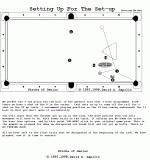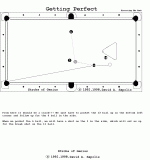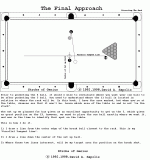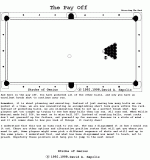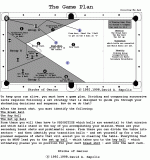The Kiss said:If you learn to skin the stack ever so slightly on safes it will improve your game exponentially
I'm not meaning to nit pick your post, but I want to expand bit on this point.
Thinning balls is defiantly a skill to learn, but I see it way overused. IMHO, thinning a ball in the pack for a safety is a last resort. Typically, all you accomplish with this move is to leave your opponent without an offensive shot. This is only half the goal of a safety. A complete safety leaves your opponent no offensive shots and very limited defensive shots. It is much better to play safeties into the pack, sticking the cue on the side and popping out balls on the other side. This puts your opponent in a much tougher position and increases the likely hood he will leave you a shot after his turn.
Babe Cranfield addresses this in The Straight Pool Bible.
